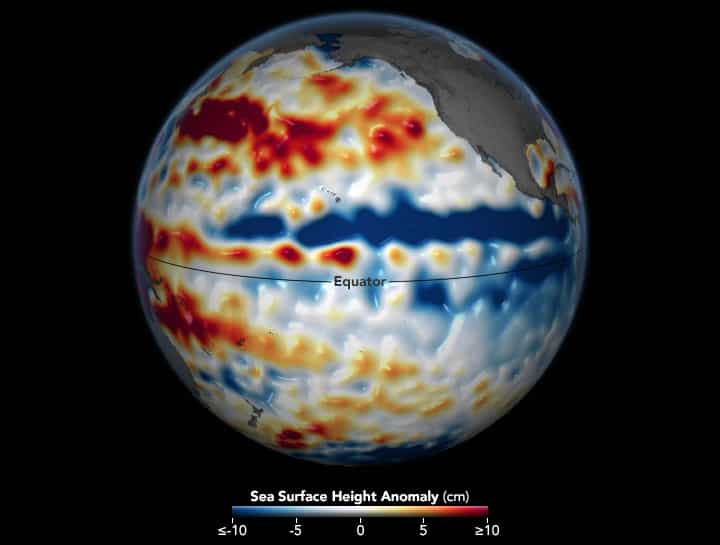Rare ‘Triple Dip’ La Niña Won’t Reverse Global Warming

 Why you can trust us
Why you can trust us
Founded in 2005 as an Ohio-based environmental newspaper, EcoWatch is a digital platform dedicated to publishing quality, science-based content on environmental issues, causes, and solutions.
The current La Niña event will extend into a third Northern Hemisphere winter, the World Meteorological Organization (WMO) announced at the end of last month.
This is known as a “triple dip” La Niña, and this is the first time the phenomenon has occurred during the 21st century.
“It is exceptional to have three consecutive years with a la Niña event,” WMO Secretary-General Prof. Petteri Taalas said in the WMO announcement.
La Niña is part of the El Niño Southern Oscillation (ENSO) weather pattern, BBC Weather explained. The pattern describes both water temperature and wind direction in the Pacific Ocean. During El Niño periods, the surface temperature of the water is warmer. However, during La Niña periods, strong winds blow warm water from off the coast of South America towards Indonesia, Australia and Asia, NPR explained. This dredges up cooler water from the depths and impacts weather around the world.
It is rare for a La Niña to last three Northern Hemisphere winters in a row. In fact, this has only occurred three times on record; the last two were from 1973 to 1975 and from 1998-2001, BBC News reported. The current La Nina began in September of 2020, according to WMO. The UN weather agency said there was a 70 percent chance it would last through September to November of 2022 and a 55 percent chance it would last from December 2022 to February 2023. That said, the extended cooling trend is no match for the climate crisis. For example, the world’s oceans reached record temperatures in 2021 despite the ongoing La Niña.
‘Its cooling influence is temporarily slowing the rise in global temperatures – but it will not halt or reverse the long-term warming trend,” Taalas said.
The triple-dip La Niña is also projected to worsen some extreme weather events.
“The worsening drought in the Horn of Africa and southern South America bear the hallmarks of La Niña, as does the above average rainfall in South-East Asia and Australasia,” Taalas said. “The new La Niña Update unfortunately confirms regional climate projections that the devastating drought in the Horn of Africa will worsen and affect millions of people.”
The UN has said that as many as 20 million people are threatened with extreme hunger in Ethiopia, Kenya and Somalia because of the ongoing drought, BBC News reported.
In the U.S., La Niña winters tend to be cold and snowy in the Northwest, dry in the South, warmer than average in the Southeast and Mid Atlantic and colder in New England, New York and the Upper Midwest, USA TODAY explained.
Subscribe to get exclusive updates in our daily newsletter!
By signing up, you agree to the Terms of Use and Privacy Policy & to receive electronic communications from EcoWatch Media Group, which may include marketing promotions, advertisements and sponsored content.

 233k
233k  41k
41k  Subscribe
Subscribe 




